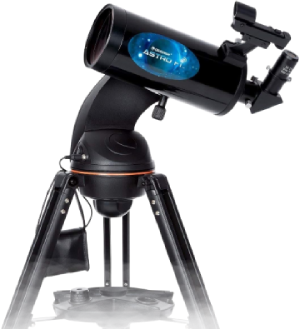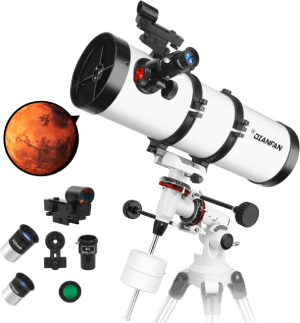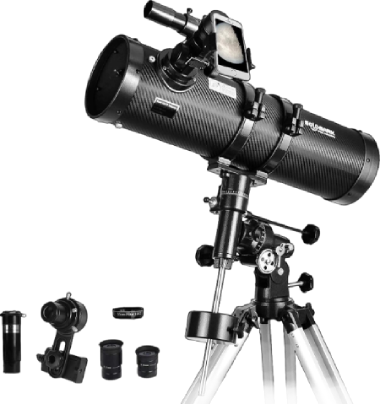If you're just stepping into the world of astronomy, the 130EQ Newtonian Reflector Telescope offers an impressive entry point. With a 130mm aperture and an equatorial mount, this telescope allows beginners and intermediate users to observe the Moon, Jupiter, Saturn, and even some deep-sky objects like nebulae, star clusters, and galaxies. Whether you're a curious teen, a hobbyist, or a parent introducing your child to the cosmos, the 130EQ offers an affordable yet powerful experience for skywatching.
Introduction
Objective Lens Diameter : 102 Millimeters
Power Source : Adapter
Optical Tube Length : 381 Millimeters
Control your telescope via integrated WiFi using the free Celestron Sky Portal app for iPhone, iPad, and Android devicesSee On Amazon

Product Features: How to Choose the Right 130EQ Reflector for You
When selecting a 130EQ Newtonian reflector, you’ll want to consider several key aspects:Aperture and Optical Power
The 130mm (5.1-inch) aperture is ideal for gathering enough light to provide clear and detailed views of both planetary and deep-sky objects. It’s significantly more powerful than a 70mm or 90mm scope, making it a great balance between price and performance.Equatorial Mount (EQ)
The “EQ” in 130EQ refers to the German equatorial mount, which is essential for tracking celestial objects smoothly as they move across the sky. This is a big advantage if you plan to observe for long periods or dabble in astrophotography.Build Quality and Portability
Look for models with aluminum tripods, metal gear slow-motion controls, and collimation adjustments for the mirrors. Some models come with upgraded eyepieces, a smartphone adapter, or a built-in Barlow lens.Budget Consideration
Most 130EQ models fall in the $180–$300 range, depending on the brand and accessories. Avoid ultra-cheap versions that may cut corners on optics or mount stability.- Celestron Astromaster 130EQ
- Orion SpaceProbe 130ST EQ
- Zhumell Z130 (though this uses a tabletop mount)
Recommended Brands
Popular choices include:Ready to Explore the Night Sky?
If you're seeking a powerful, budget-friendly telescope that will grow with your interest in astronomy, the 130EQ Newtonian Reflector Telescope is a perfect match. It’s one of the best first telescopes for those serious about learning the sky.
👉 Click here to view our recommended 130EQ reflector telescopes and find the one that suits your stargazing journey.

